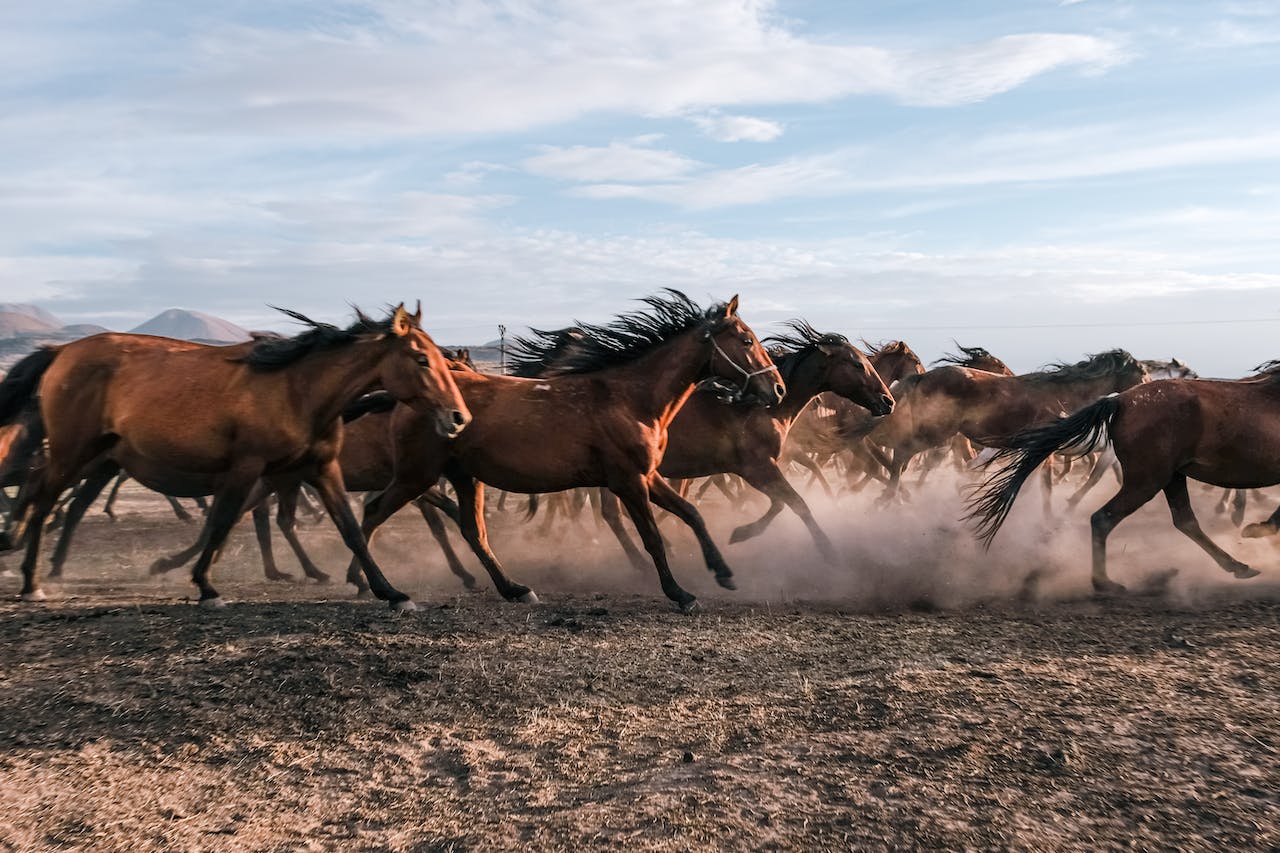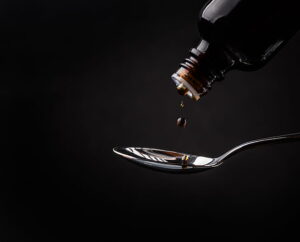FSB, Street No. 22, Punjab, Pakistan
Horses’ reproductive cycles are intricate and fascinating, and they play an important part in their capacity to breed and produce progeny. Several factors influence this cycle, which is also known as the estrous cycle. It is governed by a complicated hormonal balance.
Horses go through four separate periods in their reproductive cycle: proestrus, estrus, diestrus, and anestrus. The mare prepares her reproductive system for possible reproduction during the proestrus phase. The follicles in the ovaries are growing and developing during this time. A mare enters the estrus period, when she is more sexually receptive and modifies her behavior slightly to entice potential mates. This is the time of year when people say they are “in heat” or “in season.”
Recognizing the Horse Estrous Cycle
Understanding the estrous cycle, commonly referred to as the heat cycle, is essential to comprehending the horse reproductive cycle. A mare will go through this cycle, which is a recurrent pattern of hormonal changes that indicate she is ready to reproduce. Horses have a seasonal reproductive cycle, unlike other animals, therefore they only show signs of heat at specific periods of the year.
Proestrus, estrus, diestrus, and anestrus are the four stages that make up the estrous cycle. The mare’s reproductive system prepares for ovulation during proestrus, and she could also show behavioral changes. The time of genuine heat known as estrus is when the mare is most fertile and open to the stallion.
Anestrus is the time when a mare is not sexually active, and diestrus is the stage when her reproductive system gets ready for pregnancy. Determining the ideal period for breeding and maintaining the health of the horse’s reproductive system requires an understanding of these phases.
Horse Heat Cycle Frequency: Influential Factors
Horse heat cycles can occur more frequently depending on a number of circumstances. The season is one of the main contributing elements. Mares typically have fewer heat cycles in the fall and winter, with a larger frequency throughout the spring and summer. It is thought that temperature variations and extended daylight hours are related to this seasonal variance.
The age of the mare is another aspect that influences how frequently heat cycles occur. When compared to elder mares, younger mares typically have more frequent heat cycles. There may be a decrease in a mare’s ability to reproduce as she ages, which leads to fewer heat cycles.
The existence of specific medical diseases, such as underlying reproductive disorders or hormone imbalances can also impact the regularity of mares’ heat cycles. These factors can affect mares’ breeding and reproductive management, therefore it’s critical for horse owners and breeders to be aware of them.
Mares’ Indications of Heat
During their reproductive years, mares go through regular heat cycles, usually from early spring to late autumn. It’s critical to recognize heat-related symptoms in mares in order to control their behavior and general health, as well as for breeding purposes. A mare’s behavioral changes are one of the main clues that she is in heat. Mares going through their period may become more agitated or restless, frequently pacing or squealing more.
They might also behave more flirtatiously, winking, twitching, or cocking their tail in the direction of geldings or other mares. Furthermore, during their heat cycle, some mares may exhibit symptoms of excessive urine or “squatting and squirting,” a habit that involves bending down. A mare may be clearly in heat based on these physical and behavioral changes. A mare in heat will also exhibit notable behavioral changes, such as accepting a gelding or stallion for mating.
During their heat cycle, mares will exhibit a certain level of receptivity, which is visible in their posture and reaction to a possible mate. When a stallion or gelding approaches a mare in heat, she may stand motionless and elevate her tail. An essential sign that the mare is ready and willing to mate is her “standing heat” behavior. Accurately recognizing these indicators of heat in mares is crucial for horse owners and breeders as it helps maintain the health of their reproductive systems and promotes successful breeding.
Horse Estrus: Duration and Time of the Period
Horses can vary in the length and timing of their estrus, or heat, depending on the individual. The estrus period lasts between five and seven days on average. But depending on the mare, this could change and be shorter or longer. To provide suitable breeding opportunities, horse owners and breeders must keep a close check on their mares throughout this period.
In horses, the onset of estrus can also occur at any time. Mares typically have their first heat of the year in the spring, when the days lengthen and the temperature rises. We refer to this as the transitioning period. After that, mares usually go into regular cycles, with roughly 21 days elapsing between each heat. It is crucial to note that not all mares have regular cycles; others may have irregular cycles. Successful breeding and reproductive control in horses depend on understanding the duration and timing of estrus.
Here are some points:
- Horses go through estrus for different lengths of time; however, the average duration is five to seven days. Depending on the mare, the duration may be shorter or longer.
- Because equine estrus is unpredictable, horse owners and breeders must regularly watch their mares throughout this season to ensure adequate breeding opportunities.
- Mares often have their first heat of the year as the days lengthen and the temperature rises in the spring.
- After that, mares often enter regular cycles, with a gap of roughly 21 days between each heat.
- It’s crucial to remember that not all mares have cycles that are exactly like this; some may have irregularities.
- Successful breeding and reproductive control in horses depend on understanding the duration and timing of estrus.
Distinctions Between Geldings and Mares in Heat Cycles
The heat cycles of mares and geldings, two essential parts of the horse species, differ significantly. The most obvious difference is that, during their reproductive years, mares go through regular heat cycles, but geldings do not. Mares typically enter the heat every 21 days, though this might vary according to breed, age, and other characteristics. Alternatively, Geldings are medically castrated, which stops them from generating or manufacturing the hormones that cause heat cycles.
The behavioral changes that take place during heat cycles are another way that mares and geldings differ from one another. When compared to geldings, mares in heat, sometimes referred to as being in estrus, frequently show more obvious external indications. Frequent urination, heightened interest in stallions or other mares, tail raising or flagging, and an agitated or aggressive demeanor are some of these symptoms. Geldings, on the other hand, do not exhibit these behaviors since they do not experience the hormonal changes linked to heat cycles. Therefore, in order to manage the reproductive health and behavior of mares and geldings, it is imperative that horse owners, breeders, and equestrians comprehend and recognize these variations.
Controlling Horse Performance’s Heat Cycles
An essential part of breeding and training performance horses is controlling their heat cycles. Careful control of their heat cycles is necessary for performance horses, such as show jumpers or racehorses, in order to optimize their overall health and athletic ability. Horse owners and trainers can maximize their horses’ performance and protect their reproductive health by comprehending and skillfully regulating these cycles. Selecting the ideal breeding season is crucial to controlling heat cycles in performance horses. Regarding horse breeding, timing, and success are crucial as the aim is to produce healthy foals and successful pregnancies.
Horse owners and breeders can identify the best dates for mating by paying close attention to the mare’s heat cycles. By doing this, trainers can better arrange the horse’s competing calendar and ensure that the mare is not in heat during crucial events or training sessions, in addition to increasing the likelihood of a successful pregnancy. Because mares in heat are more likely to stray or draw unwelcome attention from stallions, controlling heat cycles can also help prevent unintended pregnancies.
The Value of Heat Sensing in Horse Breeding
An essential component of good horse breeding is heat detection. Breeders can maximize the likelihood of successful mating and subsequent conception by precisely determining when a mare is in heat. Since mares are only receptive to mating during specified periods of their estrous cycle, the ability to detect heat is essential.
Seeing how mares behave is one of the main ways to tell when they’re hot. Mares that are in heat can exhibit a number of behaviors, including frequent urine, squatting, vulva winking, tail lifting or flagging, and heightened interest in stallions. Some mares may also become more irritable or aggressive during this period. Breeders can successfully breed stallions by attentively monitoring these behavioral signs to determine the best time to introduce mares to them.
Older Mares’ Reproductive Health and Heat Cycles
Similar to humans, older mares’ reproductive health deteriorates with age. Their heat cycles can become less frequent or erratic, which is a characteristic of this deterioration. An extended period of time between heat cycles is one frequent alteration; some mares might go months without exhibiting any signs of being in heat. Breeders may find it more difficult to choose the best time to breed. Furthermore, older mares may have a reduced rate of conception and a higher chance of fertility problems, such as trouble getting pregnant or keeping a pregnancy going.
Hormone testing and routine veterinarian examinations can provide important details on the mare’s reproductive health and help spot any potential anomalies or diseases. Breeders can optimize the chances of successful breeding and a healthy foal by closely monitoring the mare’s heat cycles and reproductive health and modifying their breeding plans accordingly.
Furthermore, early detection and treatment of any reproductive health issues can improve the mare’s overall reproductive health and raise the likelihood of their resolution.
Horse Abnormalities and Disorders Associated with Heat Cycles
Horses’ reproductive health and ability to breed can be significantly impacted by abnormalities and disorders associated with heat cycles. Anovulation, in which the mare does not ovulate during her heat cycle, is one prevalent anomaly. Breeding attempts may not succeed if the estrus activity persists without the delivery of an egg. A further problem that may arise is irregular heat cycles, in which the mare goes through erratic and irregular estrus cycles.
Organizing and preparing for successful breeding may prove difficult for breeders because the mare may not exhibit conventional heat signs or become pregnant at any time. Follicle cysts, which are fluid-filled sacs on the ovaries that can obstruct regular ovulation and fertility, are another condition that certain mares may experience. Careful observation and treatment are necessary to maximize a mare’s reproductive capacity in the presence of certain anomalies and diseases.
What is the horse reproductive cycle?
The sequence of actions and physiological modifications that take place in a mare’s body to get ready for and go through pregnancy is referred to as the reproductive cycle in horses.
How can I comprehend the horse estrous cycle?
The estrous cycle, also known as the heat cycle in horses, is a repeating process in which their ovaries mature and release eggs.
What elements influence how frequently horses go through heat cycles?
The frequency of heat cycles in horses can be influenced by factors such as age, season, nutrition, stress, and the presence of a stallion.
What are the symptoms of more heat?
Increased urine, vocalization, restlessness, flirting behavior, swelling of the vulva, and receptive postures towards a stallion are all signs of heat in mares.
Estrus lasts how long in horses, and when does it usually occur?
Estrus in horses typically lasts 5 to 7 days and occurs every 21 days throughout the mating season.
Is there a difference in heat cycles between mares and geldings?
Because they have been castrated, geldings do not experience heat cycles. Only intact mares will go through heat cycles on a regular basis.
How can heat cycles in performance horses be managed?
Heat cycles in performance horses can be handled using a variety of techniques, such as hormone treatments, natural cycle suppression, and strategic breeding plans.
What is the significance of heat sensing in equine breeding?
Heat detection is critical in equine breeding to determine the best timing for mating or artificial insemination, increasing the likelihood of successful conception.
How do heat cycles affect the reproductive health of elderly mares?
Older mares’ heat cycles may become erratic or less frequent, affecting their fertility and reproductive health. A regular veterinarian examination is advised.
What are some heat cycle anomalies and diseases in horses?
Heat cycle abnormalities and diseases in horses include quiet heat, protracted heat, anestrus (lack of heat), ovarian cysts, uterine infections, and hormonal imbalances. These conditions may necessitate veterinary care.
Riding Stables: A Hub for Horse Lovers




